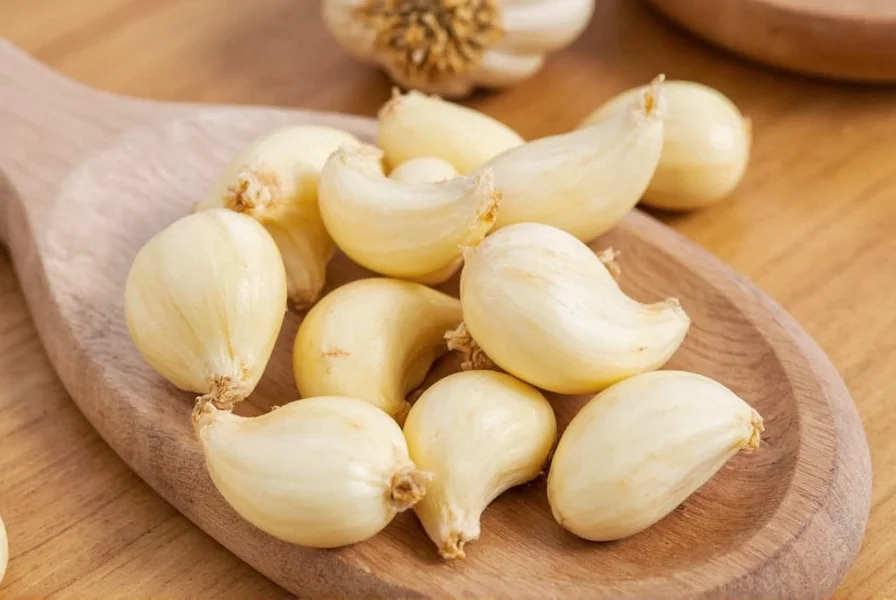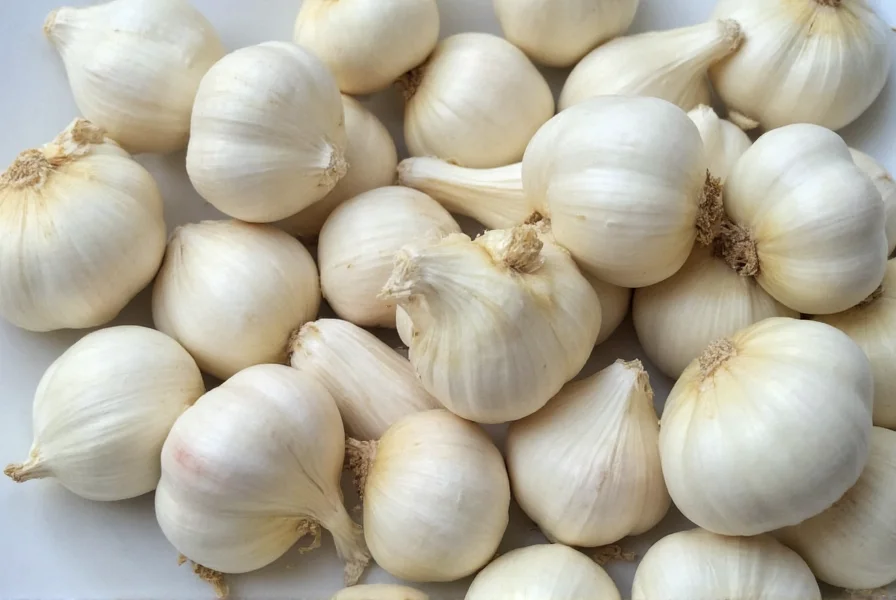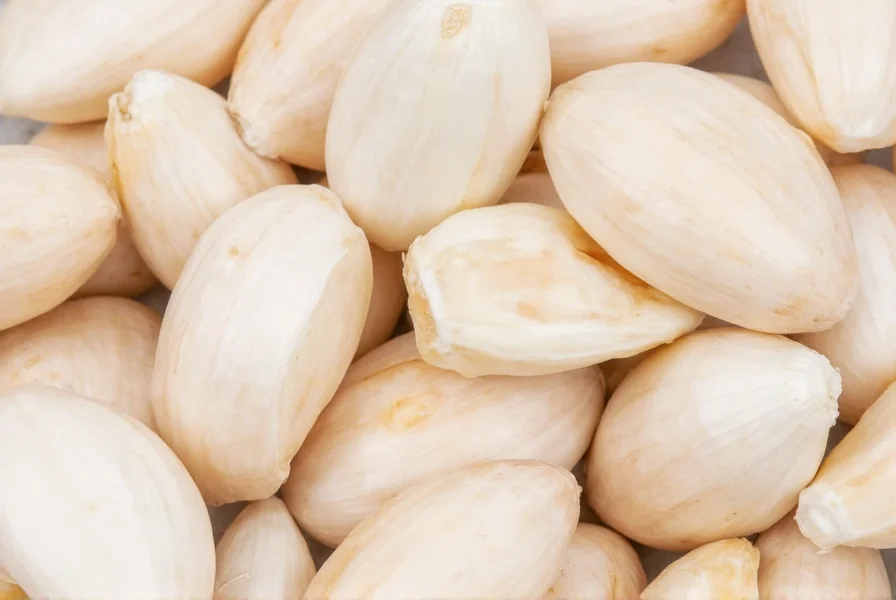Converting garlic cloves to tablespoons is essential for accurate recipe execution, especially when substituting fresh garlic for pre-minced versions. Understanding this measurement relationship prevents under-seasoning or overpowering dishes with garlic's pungent flavor.
Garlic Clove Size Variations and Measurements
Garlic cloves vary significantly in size, affecting tablespoon equivalents. Commercial garlic bulbs typically contain 10-12 cloves with three standard sizes:
| Clove Size | Weight (grams) | Minced Volume | Teaspoons | Tablespoons |
|---|---|---|---|---|
| Small | 3-4g | Finely minced | 1 tsp | 1⁄3 tbsp |
| Medium | 5-6g | Standard mince | 1⁄2 tsp | 1⁄2 tbsp |
| Large | 7-9g | Coarsely minced | 2 tsp | 2⁄3 tbsp |
Professional chefs recommend weighing garlic for critical recipes, as visual estimates vary by 20-30% depending on mincing technique. A kitchen scale provides the most reliable measurement when precision matters.
Practical Measurement Techniques
When converting garlic cloves to tablespoons without specialized tools, use these field-tested methods:
- The Water Displacement Method: Fill a tablespoon measure with water, add minced garlic until water rises to the 1⁄2 tbsp line, then drain
- Teaspoon Stacking: Three level teaspoons equal one tablespoon - useful for small garlic quantities
- Visual Reference: A medium minced clove should fill half a standard bottle cap
Remember that fresh garlic clove to tablespoon conversion differs from jarred minced garlic due to added liquid preservatives. Commercial minced garlic typically contains 30% water, requiring adjustment in moisture-sensitive recipes.

Culinary Considerations for Garlic Measurement
The garlic clove tablespoon equivalent changes based on preparation method:
- Roasted garlic: One roasted clove equals 1⁄4 tbsp due to moisture loss
- Garlic paste: 1 clove = 1⁄2 tbsp (more concentrated than minced)
- Garlic powder: 1 clove = 1⁄8 tsp (use 1:6 ratio with fresh)
For international recipes, note that metric tablespoon measurements differ: 15ml (US) vs 20ml (Australia). This 25% difference significantly impacts garlic-heavy dishes like aioli or pesto.
When Precision Matters Most
Certain recipes demand exact garlic measurement conversions:
- Preserves and pickling: Excess moisture from inaccurate measurements affects preservation
- Emulsified sauces: Garlic quantity impacts stability of mayonnaise or hollandaise
- Baking applications: Garlic bread dough requires precise hydration balance
For everyday cooking, the garlic clove to tablespoon chart provides sufficient guidance. Reserve precise measurements for critical applications where garlic affects texture or preservation.

Common Measurement Mistakes to Avoid
Cooks frequently misjudge garlic clove equivalents by:
- Confusing packed vs. loose mince (packed yields 30% more volume)
- Not accounting for root end waste (loses 10-15% of clove weight)
- Using whole clove size instead of minced volume
- Ignoring garlic variety differences (elephant garlic is milder and less dense)
When substituting fresh garlic for garlic powder, remember the 6:1 ratio - this prevents bitter, overpowering results in delicate sauces.
Practical Recipe Adjustments
Understanding garlic measurement conversions allows confident recipe adaptation:
- When a recipe calls for 2 tbsp minced garlic, use 4 medium cloves
- For 1 clove in European recipes (using 20ml tbsp), use 1⁄3 more than US measurements
- When using pre-minced garlic, reduce liquid content by 1 tsp per clove
Professional kitchens maintain garlic conversion charts near prep stations - adopting this practice improves consistency in home cooking.
Frequently Asked Questions
How many garlic cloves equal 1 tablespoon of minced garlic?
Two medium garlic cloves yield approximately 1 tablespoon of minced garlic. For precise measurement, 10-12 grams of minced garlic equals 1 tablespoon. Adjust based on clove size: use 1⁄2 large clove or 3 small cloves per tablespoon.
Does roasting garlic change the tablespoon measurement?
Yes, roasting reduces garlic's volume by 25-30% due to moisture loss. One roasted medium clove equals approximately 1⁄4 tablespoon of minced roasted garlic, compared to 1⁄2 tablespoon for fresh. Always measure after roasting for accuracy.
Can I substitute jarred minced garlic for fresh cloves?
Yes, but adjust for added liquid. Use 1⁄2 teaspoon more jarred garlic per clove equivalent (e.g., 1⁄2 + 1⁄2 teaspoon instead of 1⁄2 tablespoon). Reduce other liquids in the recipe by 1 teaspoon per clove to compensate for the preservative solution in commercial products.
Why does my garlic measurement vary from recipe to recipe?
Garlic size varies by season and variety. Commercial bulbs contain cloves ranging from 3-9 grams. Recipe developers often specify "medium" cloves (5-6g), but actual sizes differ. For consistency, weigh garlic (5g per medium clove) or use volume measurements after mincing.
How do I convert garlic powder to fresh cloves?
Use a 6:1 ratio - 1 fresh medium clove equals 1⁄8 teaspoon garlic powder. For tablespoon conversions, 1 tablespoon fresh minced garlic equals 1⁄2 teaspoon garlic powder. Remember that powder has more concentrated flavor, so adjust to taste when substituting.











 浙公网安备
33010002000092号
浙公网安备
33010002000092号 浙B2-20120091-4
浙B2-20120091-4